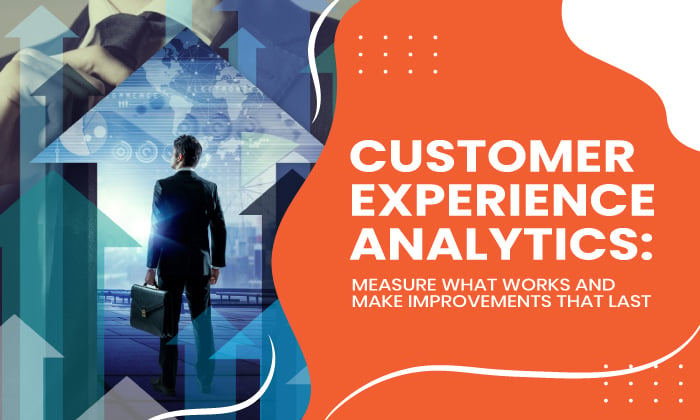Customer Experience Analytics: Measure What Works and Make Improvements That Last

By Neil Patel
Do you want a simple way to refine your customer experience? Then look at your CX analytics.
The data doesn’t lie. It tells you what you’re doing right and what you’re doing wrong. Once you’re armed with your customer experience analytics, you gain the necessary information to offer prospects and buyers the best possible care.
When you provide a stellar customer experience, you boost efficiency and humanize your service while enhancing loyalty and recommendations.
Yet, according to a report from PWC, 54 percent of consumers feel the customer experience at many businesses needs improvement.
However, there are more benefits to examining your CX analytics.
For example, 44.5 percent of global organizations feel that an amazing CX differentiates them from competitors, and who doesn’t want to stand out and get noticed?
Now you know the importance of customer experience analytics. In this article, I explain which ones you should measure and why they’re so crucial to your business.
What Is Customer Experience Analytics?
Customer experience (CX) analytics uses customer data to improve customer interactions.
You can use the data to track customer behavior and preferences to better understand how customers interact with your company and its products or services. You can then use this information to improve the CX by changing designs, the way you market to customers, or how you deliver your products or services.
There are many different ways to collect customer data. Analytics tools for customer experience often use various data sources. However, some of the most common sources include website visits, purchase histories, contact centers, and social media data.
Benefits of Tracking Customer Experience Analytics
By understanding customer behavior and preferences, analytics for customer experience can help businesses deliver a better CX faster and more consistently. Additionally, CX analytics can contribute to a positive customer experience by identifying and resolving issues early.
Below are just some of the benefits of tracking your analytics.
Customer satisfaction tracking: Perhaps the most crucial benefit is that customer experience analytics can track customer satisfaction over time. This information enables companies to identify areas where they need to make changes to keep their customers happy.
Understanding customer interactions: By analyzing your data, customer experience analytics lets you understand how customers interact with your products/services. You can then use this information to enhance the customer experience and increase sales.
Lower customer churn: When you use them correctly, customer experience analytics improve the CX and lower churn rates by increasing retention. For example, if many customers are contacting customer service about a particular issue, you can address it. This aspect is vital because consumer demand for a positive CX is increasing. However, Zendesk says 54 percent of shoppers feel businesses see it as an afterthought.
Enhanced loyalty through targeting: Understanding customer behavior lets you create targeted marketing campaigns that are more likely to convert leads into customers and encourage loyalty.
Increased value and lower spending: Predictive customer experience analytics can identify high-value customers in terms of …read more
Source:: Kiss Metrics Blog






